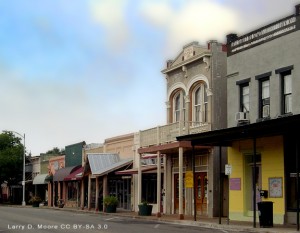People have gathered in central market places for centuries. In ancient Rome vendors gathered in outdoor bazars. In most major cities, markets could be found in the town center or town square. In the United States, “strip centers,” or stores in single long buildings, were built along highways starting in the early 1900s. After World War II, the migration to suburban areas decentralized shopping, until Austrian architect Victor Gruen designed the first fully-enclosed “mall” in 1956 near Minneapolis, which is now home to America’s largest mall. Gruen’s plan was to provide a small city-within-a-city where people could not only get their shopping done in one place in climate-controlled comfort, but could socialize and hopefully regain some of the camaraderie that was lost with the move to Suburbia.
For several decades, enclosed malls sprang up everywhere, and the strip centers – and town squares – declined in popularity. For many years it seemed The Mall would indeed become a staple of the suburban landscape. Mega-malls contained not only stores and restaurants, but also hotels, amusement parks, churches, and even schools.
But in the late 1990s and early 2000s, the shift back to outdoor “lifestyle centers” began.

Lifestyle Centers – the new retail Shopping Centers, often designed to resemble classic Main Streets. Mike Meisenbach blog.
Malls began to die. Other malls added outdoor components, becoming hybrids. Why did malls fall so far out of favor? Columnist Neil Howe thinks it’s because the way people view and use the mall has changed with a new generation. Whereas the mall was once a safe place where people could conveniently do all their shopping (except for groceries), in the last few years most have become forbidden territory because of gang and slacker activity. The economy has also taken the wind out of many retailers’ sails, driving consumers from The Gap to Walmart.
In 2004, a New York Times article predicted the lifestyle center would become the shopping mecca of the country for several reasons: for shoppers, they evoke a sense of nostalgia in the older, more affluent generation; they allow for faster shopping (the average lifestyle center trip is 56 minutes, compared to 82 minutes for a traditional mall); and it seems lifestyle centers have little appeal to teenagers and gangs because of the stores these centers attract, which makes shoppers feel safer. For retailers, downtown-style lifestyle centers are less expensive to occupy and they are typically in more affluent parts of cities (often designed to resemble the nostalgically classic American “main street” downtowns). Ten years later, it seems the writer of this article was correct, as mall construction almost completely stopped, and lifestyle centers sprang up in almost every major area. However, the National Real Estate Investor stated in 2011 that regional malls were not only not dead, they were showing distinct signs of rallying.
Can it be that shopping trends are cyclical, much like fashion? If so, what effect will the introduction of new technologies such as online shopping have on the cycle? Will retailers rely on “extras,” such as William-Sonoma’s cooking classes or The Disney Store’s entertaining Imagination Park stores to lure shoppers away from the computer and into their physical stores? It will certainly be interesting to see what the next generation of shopping looks like!

Recent Comments